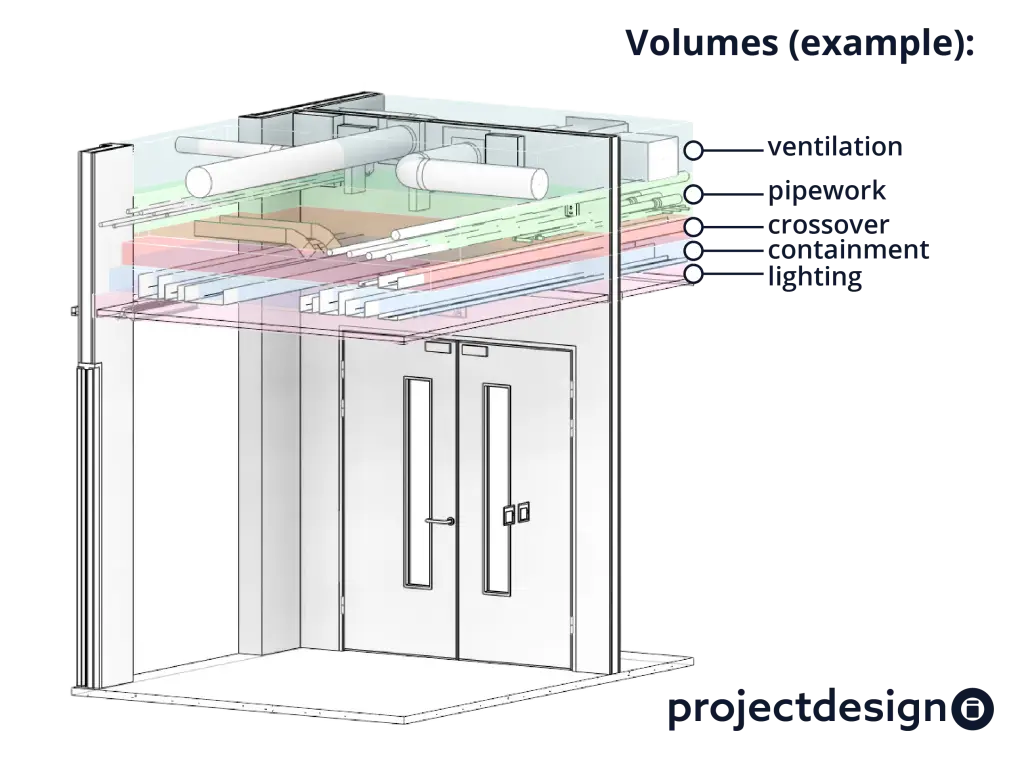Dictionary
Digital Construction (electrical)
term introduced first in PAS 1192 and updated in ISO 19650 framework, it depicts the process of specifying and delivery of project and asset information
forms a framework that supports informed and consistent decision making by project teams, at each work stage, helping to deliver agreed and reliable information.
Exchange Information Requirements (EIR) term introduced by BS EN 19650 replace the PAS 1192 term Employer Information Requirements (EIR) on all projects where BS EN ISO 19650 compliance is required.
The term introduced by ISO 19650 typically describes the Tier 1 Main Contractor.
breakdown structure to help plan the production of information
schedule of information containers and delivery dates, for a specific task team
An MPDT its old PAS 1192 term, the MPDT defines who produces what, when and to what level of detail.
Introduction
Volume Strategy enables information management, spatial coordination, and concurrent engineering, ultimately fitting together like a complex 3D jigsaw puzzle, where each piece represents a discipline’s unique space within the project.

The typical construction project involves the construction of a facility or asset, physical item or system that has value and is part of a built environment. This could include buildings, infrastructure, equipment, or systems within a building.
The purpose of a volume strategy in construction is to efficiently subdivide a project into smaller, manageable sections. This approach facilitates effective spatial planning and information management, enhancing overall project coordination and execution.
Note: The ‘volume strategy’ shall not be confused with the ISO 19650 term ‘federation strategy’
Volume Strategy – Information
Projects vary in size and complexity, requiring subdivision into manageable files and balancing resources, time, and IT capabilities. Recognising that multiple solutions may be required to depending on project size and complexity, necessitating the subdivision of the project information into manageable chunks – information containers (files).
Information Requirements: Volume strategy involves the Definition of Information Requirements and Project Standards.
Information Delivery Plan: The strategy guides the development of Task Information Delivery Plans (TIDP) and Master Information Delivery Plans (MIDP), reflecting design and construction methodology. It includes assigning file ownership, optimising file sizes for efficient interaction, and balancing the use of information authors against realistic timelines for checking, reviewing, and approving information.
Design and Construction Methodology: Part of the Information Delivery Plan, often included in the BIM Execution Plan, the volume strategy can define the progression of design production information and construction methods.
Volume Strategy - Spatial
Using a ‘building’ as our example of an asset, the meaning of volume strategy represents an understanding of the asset’s location, i.e., what the coordinates are. And the location of its components within the allocated space.
The building will consist of a set of components combined into a system of systems, for example, Mechanical, Electrical and Public Health Systems (MEP) needed for the building to function. The volume strategy shall consider and manage spatial constraints during the planning stage to enhance the efficiency of the design stage and reduce delays caused by space-related conflicts during construction.
Collaborative Discipline Integration: The volume strategy shall manage coordination among different construction disciplines within the allocated spaces.
The MEP system’s type and size are project-dependent, and based on the size and density of the building, such a system will require space. We refer to the space as three-dimensional space (volume), which must be adequate (big enough) to contain all the systems and allow access for operation maintenance and decommissioning.

Discipline-Specific Subdivisions: Allowing for detailed subdivisions within the project by different disciplines, such as structural engineering or architecture, and managing the interaction of these subdivisions.

